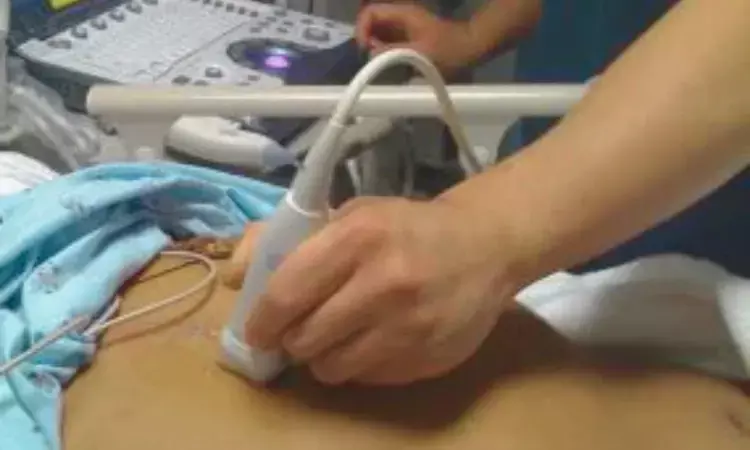- Home
- Medical news & Guidelines
- Anesthesiology
- Cardiology and CTVS
- Critical Care
- Dentistry
- Dermatology
- Diabetes and Endocrinology
- ENT
- Gastroenterology
- Medicine
- Nephrology
- Neurology
- Obstretics-Gynaecology
- Oncology
- Ophthalmology
- Orthopaedics
- Pediatrics-Neonatology
- Psychiatry
- Pulmonology
- Radiology
- Surgery
- Urology
- Laboratory Medicine
- Diet
- Nursing
- Paramedical
- Physiotherapy
- Health news
- Fact Check
- Bone Health Fact Check
- Brain Health Fact Check
- Cancer Related Fact Check
- Child Care Fact Check
- Dental and oral health fact check
- Diabetes and metabolic health fact check
- Diet and Nutrition Fact Check
- Eye and ENT Care Fact Check
- Fitness fact check
- Gut health fact check
- Heart health fact check
- Kidney health fact check
- Medical education fact check
- Men's health fact check
- Respiratory fact check
- Skin and hair care fact check
- Vaccine and Immunization fact check
- Women's health fact check
- AYUSH
- State News
- Andaman and Nicobar Islands
- Andhra Pradesh
- Arunachal Pradesh
- Assam
- Bihar
- Chandigarh
- Chattisgarh
- Dadra and Nagar Haveli
- Daman and Diu
- Delhi
- Goa
- Gujarat
- Haryana
- Himachal Pradesh
- Jammu & Kashmir
- Jharkhand
- Karnataka
- Kerala
- Ladakh
- Lakshadweep
- Madhya Pradesh
- Maharashtra
- Manipur
- Meghalaya
- Mizoram
- Nagaland
- Odisha
- Puducherry
- Punjab
- Rajasthan
- Sikkim
- Tamil Nadu
- Telangana
- Tripura
- Uttar Pradesh
- Uttrakhand
- West Bengal
- Medical Education
- Industry
What is role of ultrasonographic measurement of gastric antral volume and pH in aspiration prophylaxis in low risk surgery patients?

Sudhir Rajpal Orders Inspections on MTP and Ultrasound Centers
The aspiration of gastric contents is regarded as a highly concerning complication during anesthesia for patients undergoing diverse surgical procedures. Recent study investigated the role of preoperative pharmacological prophylaxis in preventing aspiration pneumonitis under general anesthesia in low-risk patients. The researchers conducted a single-center, double-blinded, randomized controlled trial with 200 adult patients scheduled for elective surgical procedures under general anesthesia.
The patients were randomized into two groups - a prophylaxis group that received oral famotidine and metoclopramide, and a no-prophylaxis group that did not receive any prophylaxis. All patients were kept fasting for 8 hours prior to surgery. The primary outcome was to compare the difference in residual gastric volume calculated based on USG guided gastric antral cross-sectional area (CSA) between the two groups. The secondary outcomes were to compare the gastric pH and incidence of aspiration pneumonitis.
The results showed that the gastric antral CSA and calculated gastric volume were comparable between the prophylaxis group (2.56 cm2 and 19.67 ml) and the no-prophylaxis group (3.12 cm2 and 20.11 ml). Although there was a statistically significant decrease in gastric pH in the no-prophylaxis group, it was not clinically significant to increase the risk of aspiration pneumonitis. None of the patients in either group had a gastric volume greater than 1.5 ml/kg, which is considered the threshold for aspiration risk. When analyzed using the Roberts and Shirley criteria, 38% of patients in the prophylaxis group and 44% in the no-prophylaxis group had a gastric volume ≥0.4 ml/kg, but there was no significant difference in the risk of aspiration between the groups.
The researchers concluded that in an adequately fasted low-risk surgical population, the amount of residual gastric volume and pH were similar and below the threshold to cause aspiration pneumonitis, regardless of the use of aspiration prophylaxis. They suggest that preoperative pharmacological aspiration prophylaxis may not be necessary in this patient population if adequate fasting is ensured.
Key Points -
The key points from the research article are:
1. The study investigated the role of preoperative pharmacological prophylaxis (famotidine and metoclopramide) in preventing aspiration pneumonitis under general anesthesia in low-risk patients. It was a single-center, double-blinded, randomized controlled trial with 200 adult patients scheduled for elective surgical procedures under general anesthesia.
2. The results showed that the gastric antral cross-sectional area, calculated gastric volume, and incidence of aspiration pneumonitis were comparable between the prophylaxis group and the no-prophylaxis group. Although there was a statistically significant decrease in gastric pH in the no-prophylaxis group, it was not clinically significant enough to increase the risk of aspiration pneumonitis.
3. The researchers concluded that in an adequately fasted low-risk surgical population, the amount of residual gastric volume and pH were similar and below the threshold to cause aspiration pneumonitis, regardless of the use of aspiration prophylaxis. They suggest that preoperative pharmacological aspiration prophylaxis may not be necessary in this patient population if adequate fasting is ensured.
Reference –
Kannamani B, Panneerselvam S, Rudingwa P, Badhe AS, Govindaraj K, Ramamoorthy SV. Comparison of ultrasonographic measurement of gastric antral volume and pH with or without pharmacological acid aspiration prophylaxis in low‑risk surgical patients – A randomized clinical trial. J Anaesthesiol Clin Pharmacol 2024;40:299‑304
MBBS, MD (Anaesthesiology), FNB (Cardiac Anaesthesiology)
Dr Monish Raut is a practicing Cardiac Anesthesiologist. He completed his MBBS at Government Medical College, Nagpur, and pursued his MD in Anesthesiology at BJ Medical College, Pune. Further specializing in Cardiac Anesthesiology, Dr Raut earned his FNB in Cardiac Anesthesiology from Sir Ganga Ram Hospital, Delhi.


